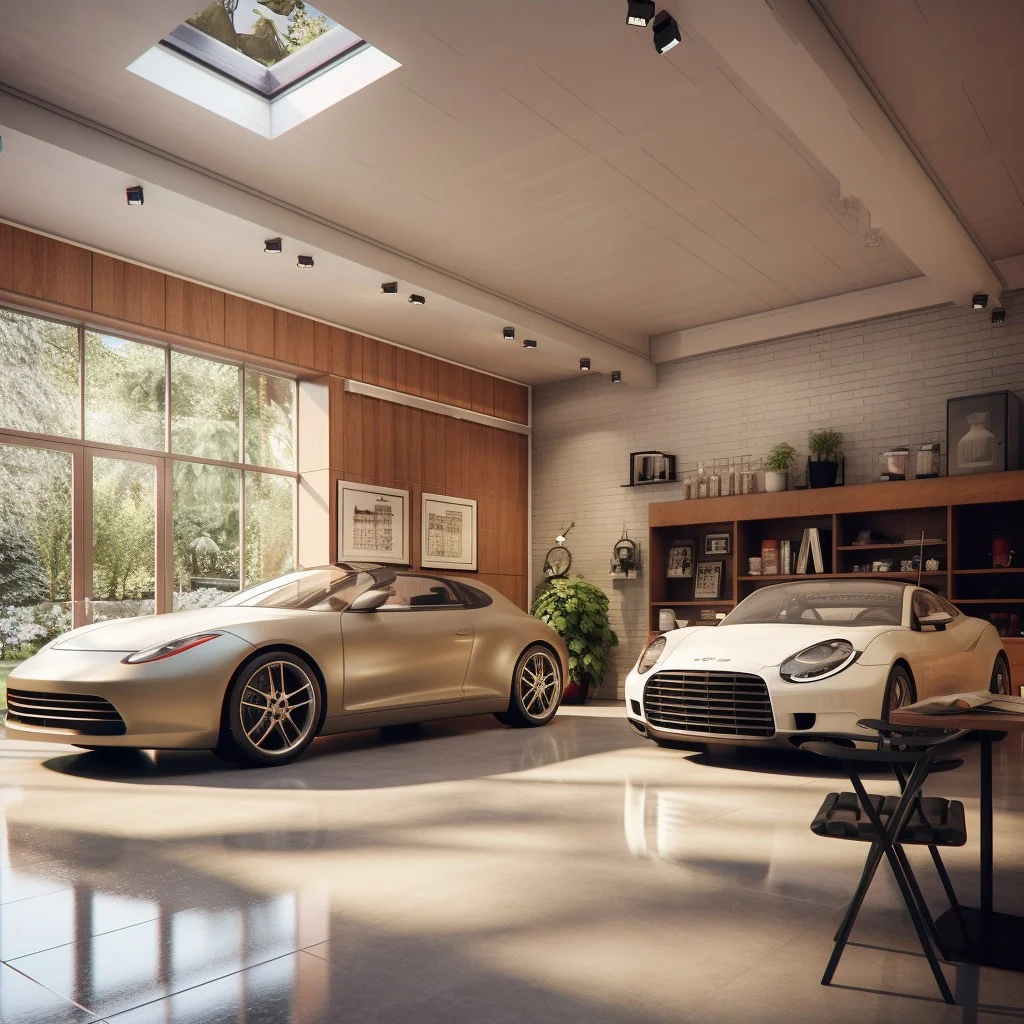A tandem garage is a unique design that optimizes space by allowing cars to park in a single-file line, one behind the other.
A tandem garage is a unique style of garage that is designed to accommodate two or more vehicles, but unlike a traditional two-car garage, the vehicles are parked in a single file, one behind the other. This design is particularly beneficial for homes with limited space or narrow lots, where a wider, traditional garage may not fit.
This article delves into the specifics of tandem garages, including their benefits, potential drawbacks, and various design options. By the end, you will have a comprehensive understanding of what a tandem garage is and whether it’s the right choice for your home.
Key takeaways:
- Tandem garages optimize space by parking cars in a single-file line.
- Tandem garages come in various types: single-car, double-car, triple-car, and customized.
- Optimal dimensions for a tandem garage are 34-40 feet in length and 10-12 feet in width.
- Tandem garages save space but require juggling cars for accessibility.
- Design considerations for tandem garages include garage door placement, interior storage, lighting, and flooring material.
Tandem Garage Meaning (Simple Definition)

A tandem garage is a unique layout where space is designed to accommodate two or more vehicles lined up one after another. This style gets its name from a horse-drawn tandem cart, where horses, like the cars in the garage, are aligned in a single file.
These garages are most commonly seen in urban areas where land is limited, and their primary advantage is the efficient use of space. They come in various lengths, allowing for storage of two, three, or even more vehicles, depending on the available space.
Ensure your vehicles can comfortably fit within this garage style before committing to a tandem layout.
Types of Tandem Garages

Some residences boast a single-car tandem garage, accommodating one vehicle behind the other. While less common than dual vehicle versions, these are a typical choice for properties with limited side space.
On the other hand, a double tandem garage is essentially two single tandem garages next to each other. It can house four cars – two in each lane.
There’s also a triple tandem, a superb option for homeowners with multiple vehicles, or those needing extra room for storage or a workshop. It can comfortably fit three vehicles one behind the other.
Lastly, there are customized tandem garages, designed with additional features like raised ceilings for storage, side entrances for easy access, or built-in workbenches. The beauty of these garages lies in the flexibility they offer in terms of utilization and design.
Tandem Garage Dimensions

Optimal dimensions for a tandem garage aim to comfortably fit two cars, one behind the other. This usually requires the length to be at least 34-40 feet, ensuring enough walking space around parked vehicles. The width, on the other hand, mirrors that of a standard garage, around 10-12 feet. This allows sufficient room for vehicle doors to open without causing damage.
However, if planning to use the tandem garage for additional vehicle storage, including boats or trailers, or as a workshop or home gym, the design might need adjustments. In these cases, a width of 14 feet or more is often recommended, while the length should be tailored to fit the specific stored items.
Remember, these numbers should serve as a guide rather than strict rules. Each garage project should account for individual needs, local building codes and the property’s available space.
Tandem Garage Vs Double Garage

A key distinction lies in their layout: a tandem garage houses vehicles in a single-file line, while a double garage accommodates two cars side by side.
The choice between these configurations depends on the amount of land available and the homeowners’ preferences. Double garages can be easier for families with multiple drivers as no car needs to be moved to let another one out. However, they require a wider plot of land.
On the other hand, tandem garages, taking up less width, are beneficial for properties with limited space. They provide an ideal solution for long, narrow plots and are also great for those who wish to have additional storage or work space. However, they require cars to be parked behind one another, which can necessitate some vehicle juggling.
Overall, understanding which type will be more beneficial depends entirely on your specific circumstances, such as house position, driveway size, car usage, and personal preferences.
Pros and Cons of Tandem Garages
Starting with the advantages, a key benefit of tandem garages is their space-saving design. They are the perfect fit for narrow lots where space could be an issue. Additionally, they can be a cost-effective option as they require less material to build, considering their linear construction.
Moreover, when designed thoughtfully, they can offer ample storage for your second vehicle, boat, or other recreational equipment, not only protecting them from inclement weather but also keeping them out of sight, maintaining the aesthetics of your home’s exterior.
Turning to the potential downsides of tandem garages, perhaps the most noticeable inconvenience is accessibility. Usually, to get the car out that’s parked within, the car parked in front needs to be moved, which can take additional time. This design may not suit homeowners with multiple drivers who all need to access their vehicles independently. Another con could be that potential home buyers may not perceive the same value in a tandem garage as they would a traditional two-car garage, possibly impacting resale.
Lastly, if utilised as storage space instead of vehicle parking, these garages might become cluttered over time as they don’t naturally lend themselves to structured organization due to their elongated form.
Design Considerations for Tandem Garages
Creating an effective layout for a tandem garage requires thoughtful consideration. Firstly, the position of the garage doors is crucial. You might opt for one large door or two smaller ones, depending on the space available and the number of cars parked.
Secondly, attention should be paid to interior storage. To avoid making the space look cluttered, consider implementing built-in shelves and ceiling hooks for bikes and tools.
Another essential concept is lighting. Incorporate plenty of bright, robust lighting to create a well-lit space that can be used at any time of the day.
Lastly, think about the material used for the garage floor. Concrete is the standard choice, but applying an epoxy coating can improve durability and add a sleek finish. Always consider the functionality and practicality of the design to ensure the tandem garage works well for your lifestyle.
FAQ
What are the benefits of a tandem garage?
The primary benefit of a tandem garage is the ample space it provides for the utilization of various tools and equipment.
What is the difference between a tandem and non tandem garage?
A tandem garage accommodates two cars longitudinally, one behind the other, while a non-tandem garage holds cars laterally, side by side.
What is the difference between a double garage and a tandem garage?
A double garage allows two vehicles to park side by side, whereas a tandem garage is designed for one vehicle to park behind another, with only one vehicle able to drive through the door at a time.
What is a tandem garage door?
A tandem garage door refers to a type of garage design where two cars can be parked one behind the other, and it may feature two openings allowing the first car to pull through without the need to move the second car.
How can a tandem garage improve home resale value?
A tandem garage can improve home resale value by providing additional storage space, accommodating multiple vehicles, and offering potential for conversion into living space.
What are the specific design considerations for a tandem garage?
Tandem garage design considerations include ensuring sufficient space for two or more vehicles to park one behind the other, providing adequate ventilation, facilitating easy access to all parked vehicles, and incorporating functional storage solutions.
Is there a preferred layout for the vehicles in a tandem garage?
In a tandem garage, the preferred layout for vehicles is one behind the other, maximizing the utilization of the elongated space.